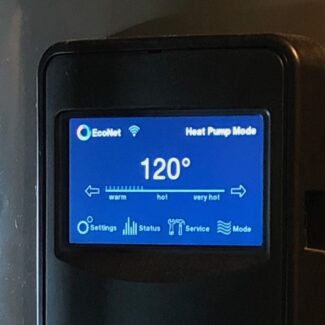The cfm50 is a number that makes sense to analysts who work with it all the time, but when a homeowner hears that their house leaks at the rate of 4500 cfm50, for example, it usually doesn’t make a lot of sense to them. Also, larger houses have more places that can leak, so you can’t directly compare the cfm50 for different size houses.

So, once the auditor/rater has the cfm50, they usually do some calculations to present the results in ways that are easier to grasp and that eliminate (or at least reduce) the issue of house size. The first and most common calculation is to convert cfm (cubic feet per minute) to ACH (air changes per hour). An air change is when a volume of air equal to the volume of the house exchanges with outside air. One ACH, then, means all the air in the house exchanges once per hour.
With the Blower Door running and the house pressure at negative 50 Pascals, a typical existing home might leak at the rate of 15 air changes per hour, which is written 15 ACH50. Really tight houses can get down to 1 ACH50 or even less. In fact, the Passive House program requires a maximum infiltration rate of 0.7 ACH50.
Will Your Water Heater Give You Legionnaires’ Disease?
Whenever I post a photo of the control panel of my heat pump water heater (like the one above), I…
I want to learn from the best and I’m very happy I made the trip to Atlanta to train with Energy Vanguard.

